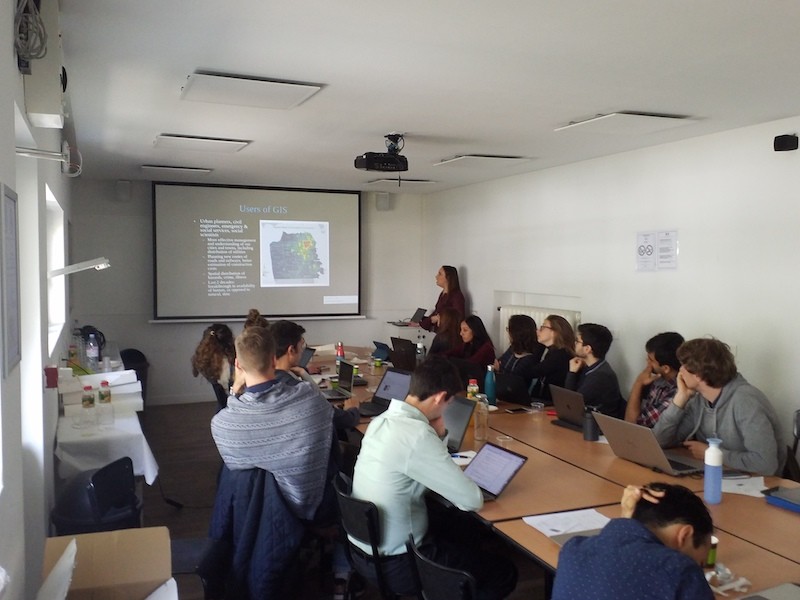Paris Center Stories: Anjana Tiwari, Alliance Summer School 2019
Anjana Tiwari, a participant in the Alliance Summer School in Sustainable Development, shares her experience in Paris and her latest projects.

Tell us about yourself. Where are you from and what are you studying?
I am a recent graduate of the Asian Institute of Technology (AIT), Thailand in Urban Environmental Management. This program prepared me to understand and respond to complex issues of urban growth and environmental problems from the planning and management perspectives towards inclusive and sustainable urban development.
Why did you decide to participate in the Alliance Summer School?
I was introduced to this program through my department in sustainability and development at AIT. The most important decisive step was my own experience during my graduate studies where I had been exposed to quite a number of research projects that were novel and interesting to me in the field of urban development. In this process, my interest piqued in sustainable and resilient urban development through spatial planning. Even though during my thesis days I got to work with Geographic Information System and Remote Sensing for my research interest, I still lacked knowledge on the advanced research methods used by natural and social science practitioners. Which is why, I was intrigued by this course that seemed like an excellent learning opportunity for me. In addition to the opportunity to broaden my knowledge in sustainable development, I was very motivated to participate in this summer school because it gave me the chance to visit Paris and marvel at its history, architecture and urban form. Lastly, I should definitely mention the availability of competitive scholarships for citizens like me from a developing country gave me the courage to essentially apply for this summer school.

What project(s) are you currently working on?
Urban areas have been facing the risk of disasters induced by natural hazards and impacts of climate change. Urban areas face higher physical and economic risk due to concentrated population, infrastructures, structures and rapid expansion with unplanned land use. The prime factor increasing urban risks is hazards which are the natural phenomenon of the Earth’s system but nowadays are increasingly known as a human-induced problem. They are the complex result of natural factors and anthropogenic processes. Hence, urban risk is the outcome of natural hazards and its impact on humans and their built environment.
The background study of disaster trends on urban areas and the concept of urban resilience demonstrate the reasons why risk assessment is important in urban areas. Urban risk assessment brings together an analysis of the causes of disasters, taking into account the potential hazards, the vulnerability of the study area and the elements at risk. Within my interest of planning sustainable and resilient cities, I recently finished working on defining problems associated with the development of resilient cities by carrying out urban risk assessment integrating both natural and anthropogenic factors using spatial multi-criteria analysis in a GIS-based environment in Kathmandu Valley, Nepal. I have very recently started on the concept of urban carrying capacity, to identify its indicators and its implications for balanced human development and environment in a small town in Thailand.
What do you think are the most pressing climate issues facing big cities?
Cities are home to more than half of the world’s population and are the primary target of climate-related issues. Most of the cities bear the pressure of accommodating millions of residents every month which comes with another pressure of providing means and services for the old and new residents at the cost of natural environment. These added pressures bring climate change challenges resulting from this rapid urbanization process. In a world like ours, where cities are the hub of wealth generation, prospering economies and strengthening human development are nevertheless extremely vulnerable in meeting basic needs such as having adequate food and water and healthy living conditions. Even though climate change is a global issue, coastal cities are facing eminent disaster risk from sea level rise, coastal surges and extreme climate events, which make adaptation costly. The most vulnerable groups to be hit by climate issues such as increasing urban heat, drought or flood, are the urban poor in both large and small cities. With the increase of disaster risk, cities also face challenges of energy demands due to the expected rise in temperature in warmer countries. There will also be challenges to providing quality food and water to the increasing city populations. Migration from climate affected regions can be another added burden in big cities due to climate change impacts.
Cities are often considered as only the bane to climate change impacts because of environmental degradation but cities can also be the boon towards climate change issues. Cities can be planned to increase environmental efficiency, with reducing GHG emissions through increased density planning, transit-oriented development, walkability and energy efficiency. These effectively planned sustainable cities not only promote better quality of life but also promote innovations through increased connectivity between the residents and decision-makers. Hence, how well and effectively cities are planned for reducing GHG emissions, managing energy demands, sharing basic infrastructures and services as well as reducing free-rider problem, will determine the cities’ ability to mitigate and adapt to climate change issues.

What were your favorite moments / or biggest take-aways from this year’s school?
Regarding the summer school, the biggest take-aways academically for me would be being introduced to a number of researchers from renowned institutions and learning about their past and present projects on the subject, which gave us an idea of how graduates like us could move forward in the sustainable and development field. On a personal level, experiencing life in Paris (even only for few days), trying French cuisines, seeing the exemplary European architecture that I studied during my undergraduate studies and most importantly making friends from different parts of the world, tops the list for my favorite moments.